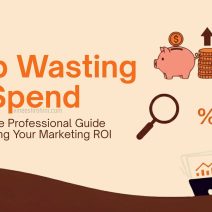Start an Amazon FBA Business : Starting an Amazon FBA business in 2025 is one of the most lucrative online business opportunities available today. With e-commerce sales projected to grow even more in the coming years, launching your own Amazon FBA store can be a game-changing move. FBA stands for Fulfillment by Amazon, a program where Amazon stores, packs, and ships your products for you.
Table of Contents
This allows sellers to focus on sourcing products, optimizing listings, and scaling their business without the hassle of logistics. If you are serious about building a profitable passive income stream or a full-time business, understanding how to start an Amazon FBA business in 2025 is essential
Why Start an Amazon FBA Business in 2025?

Amazon continues to dominate the global e-commerce industry. With over 300 million active customers and a proven fulfillment system, the FBA model offers an unparalleled opportunity to reach a massive audience. Whether you want financial freedom, the ability to work from anywhere, or the chance to build a brand that you can later sell for a massive profit, Amazon FBA provides the ideal platform. In 2025, innovations in logistics, AI tools for market research, and better access to global suppliers make it easier than ever to succeed
Step 1: Understand How Amazon FBA Works
First, it is important to understand the basics. Amazon FBA allows you to ship your inventory to Amazon’s warehouses, and when a customer places an order, Amazon handles the rest.
Also Read : How to Sell on Amazon-Flipkart-Meesho in 2025
This means you benefit from Amazon’s world-class logistics network, customer service, and trust factor. It also gives your products eligibility for Prime shipping, which can significantly increase your sales. Setting up an Amazon FBA business in 2025 requires careful planning, smart product selection, strategic branding, and effective marketing
Step 2: Choose a Profitable Product
Choosing the right product is the most critical step. Product research is the foundation of your success. In 2025, the market is more competitive, so you must find a product that meets specific criteria. Look for products that are lightweight, small, durable, and priced between $20 and $70. These products are easier to ship, have good profit margins, and are more likely to generate impulse purchases. Use tools like Jungle Scout, Helium 10, and AMZScout to analyze product demand, competition level, profit margins, and trends. Avoid overly saturated markets and instead focus on finding niche products with strong and steady demand
Step 3: Find a Reliable Supplier
Once you have identified a winning product, the next step is to find a reliable supplier. Platforms like Alibaba, Global Sources, and IndiaMart are popular for sourcing products for Amazon FBA in 2025. When contacting suppliers, ask for product samples, negotiate pricing, inquire about minimum order quantities, and discuss shipping methods. Always prioritize quality, not just price. Poor quality products can destroy your brand reputation before you even get started
Step 4: Set Up Your Amazon Seller Account
After securing a supplier, the next phase is to create your Amazon Seller account. Go to Amazon Seller Central and sign up for a Professional Seller account. It costs around $39.99 per month but gives you access to all the tools and reports necessary to grow your FBA business. During the setup process, you’ll provide your business information, tax ID, bank account details, and other required documentation. In 2025, Amazon’s verification process has become stricter to prevent fraud, so ensure you submit accurate and verifiable information
Step 5: Optimize Your Product Listing for Maximum Visibility
Listing optimization is a crucial part of starting an Amazon FBA business. Your product listing must be optimized with high-search keywords to maximize visibility and conversions. Conduct thorough keyword research using tools like Helium 10 or Viral Launch to identify the most relevant and profitable keywords for your product. Include these keywords in your product title, bullet points, product description, and backend search terms. Use high-quality images, preferably lifestyle images, infographics, and videos, to showcase your product’s features and benefits
Step 6: Prepare Your Products for FBA Shipment
Next, you need to prepare your products for FBA. You must follow Amazon’s packaging and labeling requirements. Products should be labeled with FNSKU barcodes, properly packaged to prevent damage, and shipped to Amazon fulfillment centers. You can either prepare and label the products yourself or hire a third-party prep center. Many sellers prefer using prep centers, especially if they source products from overseas suppliers, as it saves time and ensures compliance with Amazon standards
Step 7: Launch and Market Your Product
Marketing and launching your product is another critical step. In 2025, simply listing your product on Amazon is not enough. You need a strong launch strategy to gain initial traction and reviews. Utilize Amazon PPC (Pay-Per-Click) ads to drive targeted traffic to your listing. Set up campaigns targeting high-converting keywords and adjust your bids based on performance data. You can also leverage external traffic sources like social media, email marketing, influencer marketing, and even TikTok ads to boost visibility. Early momentum is key to climbing Amazon’s search rankings quickly
Step 8: Manage Customer Service and Get Positive Reviews

One of the most important parts of scaling your Amazon FBA business in 2025 is focusing on customer satisfaction. Encourage buyers to leave honest reviews by following up through Amazon’s messaging system. Always address customer complaints promptly and provide excellent service. A steady flow of positive reviews not only improves your product’s credibility but also enhances its organic search rankings
Step 9: Calculate Amazon FBA Fees and Profit Margins
Understanding Amazon FBA fees is critical to maintaining profitability. In 2025, Amazon charges fees for storage, fulfillment, referrals, and optional services like advertising. Make sure you factor all these costs into your pricing strategy. Tools like the Amazon FBA calculator can help you estimate your net profit margins accurately. Always aim for at least a 30%-40% profit margin after all costs
Step 10: Build a Strong eCommerce Brand on Amazon
Branding is becoming more important than ever. With Amazon’s Brand Registry program, registered brands get access to enhanced brand content, A+ content, Sponsored Brands ads, and other advanced tools. Building a recognizable brand can help differentiate your products from competitors and foster customer loyalty. Invest in creating a professional logo, packaging, and storytelling that resonates with your target audience
Step 11: Master Inventory Management
Inventory management is another key area to master. Stockouts can cause your product rankings to drop, while overstocking can lead to high storage fees. Use inventory management software or Amazon’s inventory tools to track sales velocity, forecast demand, and replenish stock on time. Always prepare ahead for peak seasons like Prime Day, Black Friday, and Christmas
Step 12: Expand Your Product Line
Expanding your product line strategically is an effective way to grow your Amazon FBA business. Once your first product is successful, consider launching complementary products within the same niche. This not only helps you cross-sell to existing customers but also strengthens your brand authority in that niche
Step 13: Sell Internationally with Amazon Global Selling
International expansion is another huge opportunity. Amazon operates in multiple marketplaces including the US, Canada, UK, Germany, Australia, and Japan. Tools like Amazon’s Global Selling program make it easier to list products internationally. However, you must understand local regulations, taxes, and customer preferences before entering a new market
Step 14: Automate and Outsource to Scale Your Business
Outsourcing and automation are critical for scaling. As your business grows, hire virtual assistants, PPC managers, and sourcing agents to free up your time. Use automation tools for repricing, review requests, and inventory alerts to streamline operations. This helps you focus on strategic growth rather than getting stuck in day-to-day tasks
Step 15: Ensure Legal Compliance and Protect Your Business
Legal compliance is another important consideration. In 2025, Amazon has tightened its policies regarding intellectual property, product safety, and certifications. Make sure your products comply with regulations like FDA approval for health products, CE marking for electronics, or CPSIA compliance for children’s products. Also, consider trademarking your brand and getting liability insurance
Step 16: Stay Updated with Amazon Policies and Algorithm Changes
Keeping up with Amazon’s algorithm changes and policy updates is crucial for long-term success. Stay informed by following Amazon seller forums, blogs, podcasts, and updates from Amazon Seller Central. Being proactive and adapting to changes quickly can give you a significant competitive edge
Step 17: Network with Other Amazon Sellers
Networking with other Amazon sellers can accelerate your learning curve. Join Facebook groups, attend e-commerce conferences, and participate in masterminds. Sharing insights, challenges, and strategies with like-minded entrepreneurs can provide valuable support
Step 18: Keep Detailed Records for Growth or Sale
Document everything from day one. Track product research, supplier communications, financials, marketing strategies, and customer feedback. Having detailed records not only helps optimize operations but also makes your business more attractive if you ever decide to sell it
Step 19: Be Patient and Persistent
Finally, patience and persistence are key. Building a profitable business takes time. You will encounter challenges like slow sales, negative reviews, supplier issues, or ad performance problems. Those who stay consistent, continuously learn, and adapt are the ones who eventually succeed
Start an Amazon FBA Business – Conclusion:

Starting an Amazon FBA business in 2025 involves mastering product research, supplier sourcing, listing optimization, marketing, inventory management, branding, compliance, and scaling strategies. By focusing on high-demand, low-competition products, building a strong brand, optimizing your listings with high-reaching keywords, and consistently delivering excellent customer service, you can build a profitable and sustainable e-commerce business.
Buy Now : Ecommerce Website With 100 Products
Whether your goal is to earn a side income or build a multi-million dollar brand, Amazon FBA offers a proven pathway to success for those willing to put in the work. With the right strategies, mindset, and execution, 2025 could be the year you change your financial future forever by launching your Amazon FBA business
Keywords : Start an Amazon FBA Business – Start an Amazon FBA Business 2025 – Start an Amazon FBA Business now , Start an Amazon FBA Business in India







